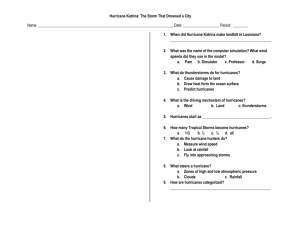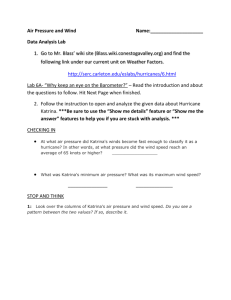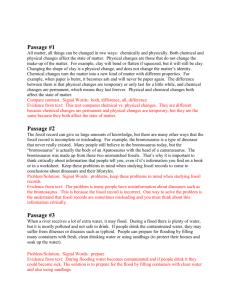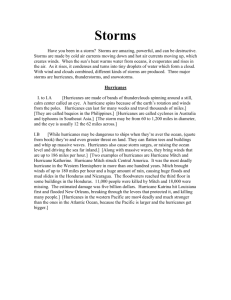Worksheet#3 post watching movie part 1
advertisement
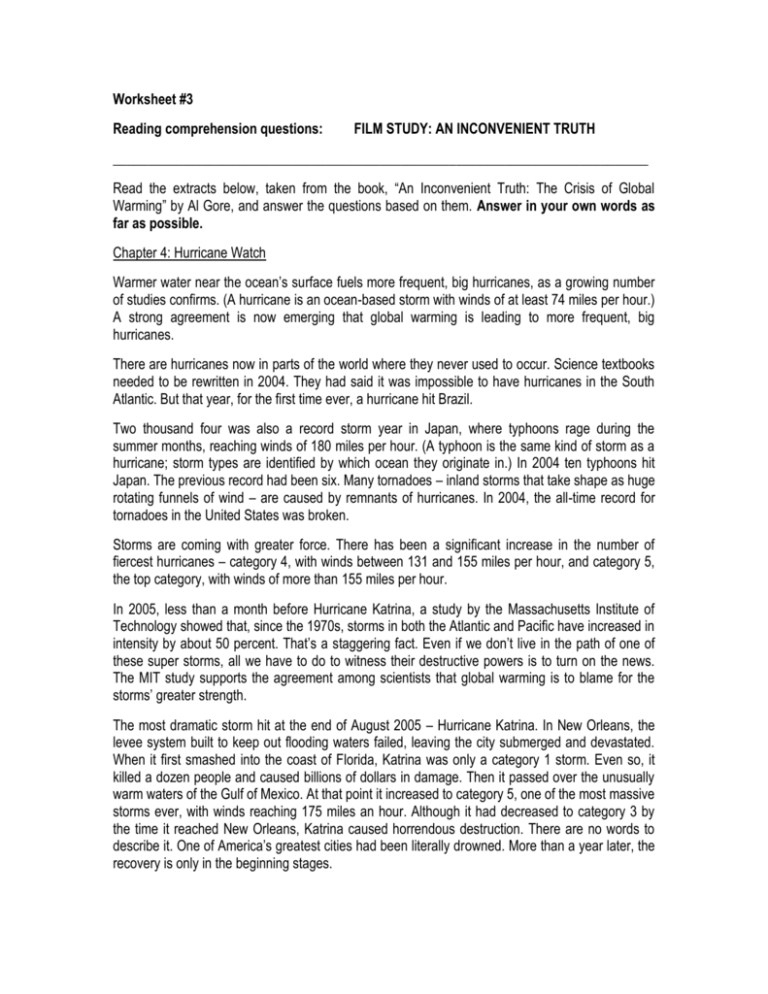
Worksheet #3 Reading comprehension questions: FILM STUDY: AN INCONVENIENT TRUTH ______________________________________________________________________________ Read the extracts below, taken from the book, “An Inconvenient Truth: The Crisis of Global Warming” by Al Gore, and answer the questions based on them. Answer in your own words as far as possible. Chapter 4: Hurricane Watch Warmer water near the ocean’s surface fuels more frequent, big hurricanes, as a growing number of studies confirms. (A hurricane is an ocean-based storm with winds of at least 74 miles per hour.) A strong agreement is now emerging that global warming is leading to more frequent, big hurricanes. There are hurricanes now in parts of the world where they never used to occur. Science textbooks needed to be rewritten in 2004. They had said it was impossible to have hurricanes in the South Atlantic. But that year, for the first time ever, a hurricane hit Brazil. Two thousand four was also a record storm year in Japan, where typhoons rage during the summer months, reaching winds of 180 miles per hour. (A typhoon is the same kind of storm as a hurricane; storm types are identified by which ocean they originate in.) In 2004 ten typhoons hit Japan. The previous record had been six. Many tornadoes – inland storms that take shape as huge rotating funnels of wind – are caused by remnants of hurricanes. In 2004, the all-time record for tornadoes in the United States was broken. Storms are coming with greater force. There has been a significant increase in the number of fiercest hurricanes – category 4, with winds between 131 and 155 miles per hour, and category 5, the top category, with winds of more than 155 miles per hour. In 2005, less than a month before Hurricane Katrina, a study by the Massachusetts Institute of Technology showed that, since the 1970s, storms in both the Atlantic and Pacific have increased in intensity by about 50 percent. That’s a staggering fact. Even if we don’t live in the path of one of these super storms, all we have to do to witness their destructive powers is to turn on the news. The MIT study supports the agreement among scientists that global warming is to blame for the storms’ greater strength. The most dramatic storm hit at the end of August 2005 – Hurricane Katrina. In New Orleans, the levee system built to keep out flooding waters failed, leaving the city submerged and devastated. When it first smashed into the coast of Florida, Katrina was only a category 1 storm. Even so, it killed a dozen people and caused billions of dollars in damage. Then it passed over the unusually warm waters of the Gulf of Mexico. At that point it increased to category 5, one of the most massive storms ever, with winds reaching 175 miles an hour. Although it had decreased to category 3 by the time it reached New Orleans, Katrina caused horrendous destruction. There are no words to describe it. One of America’s greatest cities had been literally drowned. More than a year later, the recovery is only in the beginning stages. 1. What conclusions have new studies come to with regard to the reason for more frequent and violent hurricanes? 2. What surprising fact about hurricanes does Gore mention in the second paragraph? 3. What is the difference between a hurricane and a typhoon? 4. What are tornadoes, and how are they formed? 5. What was significant about the conclusions of an MIT study in 2005? 6. Which facts does Gore provide about Hurricane Katrina to show that even when it was only a category 1 storm, it still had immense power? 7. Briefly explain how and why Hurricane Katrina increased to a category 5 storm when it passed over the Gulf of Mexico. 8. Write down the sentence that reveals Gore’s shock and horror at Hurricane Katrina’s power.


